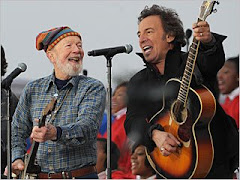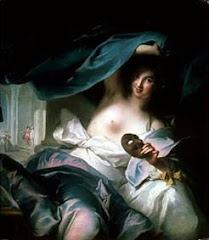Richie’s wife, Noelle, was the one who began asking a series of questions about the Colts and their no-huddle offense, and while Richie was patiently explaining to her how it works, and why Peyton Manning was dancing around before the play and shouting things and gesturing to his teammates like crazy, that’s when I got this brilliant idea that writers can have their own no-huddle approach to writing. At least I think it might be brilliant, although I haven’t told anyone about it. Until now.
Richie and Noelle had walked down the street to my place to watch the AFC championship game between the Colts and the Jets, with a trip to Miami and the Super Bowl awaiting the winning team. The Jets and their rookie quarterback had jumped out to an early lead, but here came Peyton and the Colts at the end of the first half with a touchdown to make it close again. Richie and I assured each other that the Colts would take care of business in the second half. Richie opened another beer and began to explain the no-huddle to Noelle during halftime, and that’s when it hit me, “The Great No-Huddle Approach to Writing.”
To appreciate the no-huddle, you have to think about the old huddle approach first. We’ve all seen it a million times. Eleven guys huddle in a circle; the quarterback calls the play; they break the huddle and jog to the line of scrimmage. Kind of dull. You see one huddle, you’ve seen them all. If hockey players stopped skating and huddled up before each charge down the ice, the fans would riot in protest. On TV they usually don’t even show the huddle, preferring instead to show a replay of the previous play, or a closeup of the coach, or the cheerleaders (Richie’s favorite).
I think some writers do this too. Before they write even one word they go into a huddle, with themselves, and decide how they’re going to tell the next story, or start the next chapter.Yikes, some writers even outline, and readers are lucky they don’t have to sit through that exercise! Get on with the story, the readers insist. And while one writer is outlining, the readers slip away and look for another writer who has a story ready for them.
But the no-huddle? Now there’s an intriguing approach to football, and to writing. Think of it as a form of improvisation. Instead of huddling up to call the next play, the Colts offensive players line up immediately. Then Peyton Manning goes into his act, surveying the defense, looking for weaknesses to attack, then calling out signals to various Colts players, who shift positions and force the defensive players to join the dance and do their own shifting. Some of Peyton’s signals are real, and some are decoys. It’s all rather cerebral. Manning has been called the most cerebal quarterback ever. When will the center hike the ball? Who knows? Only the Colts. They have 40 seconds from the end of the previous down (or 25 seconds after the ball is declared ready for play). Even the 25 seconds is an eternity.
Here comes the truly difficult part. For me, at least. How can the no-huddle offense inspire a no-huddle approach to writing? I believe that the key component is improvisation. The writer is like Peyton Manning standing in the shotgun, surveying the territory ahead. Where shall we go with this story? Let’s move some of the characters around first, prepare them for the action. The play clock on the scoreboard is winding down—20 seconds, 15, 10, 5—time to hike the ball. Time to begin the action. As Hamlet says, “The play's the thing.” Now the quarterback has the ball, the writer has his fingers on the keyboard, and the action begins.
Here’s the fun part, in a football game and in writing fiction.Players, and characters, begin to interact in unpredictable ways. The writer, like the quarterback, must be ready for a little chaos. If the football play, or the story, begins to break down, it’s time to improvise. Like the quarterback, the writer still has choices, although they are different from what they had so recently expected. Like the quarterback, the writer must never panic. Protect the ball, protect the story. Guide the team, and the story, on the path to a happy ending.
Speaking of happy endings, the second half is a great one for the Colts. Richie and Noelle and I are louder and more joyful in the words we shout at the TV screen. Noelle even makes a few enlightened comments about the Colts offense; Richie has coached her well. Peyton and the no-huddle offense put on a clinic for the poor Jets, and in the end there is no doubt which team deserves to go to the Super Bowl.
After the game, Peyton appears at the press conference in coat and tie, appearing unscratched and totally together. But when he speaks he says he’s grateful that he has two weeks until the Super Bowl. He needs the time because he’s tired. His mind is tired.
Of course! It’s not easy being the most cerebral quarterback ever. And it’s not easy guiding a story from beginning to middle to end. At the end you just want to give your mind a rest. Take a couple of days off. Like Peyton, you've earned it.














